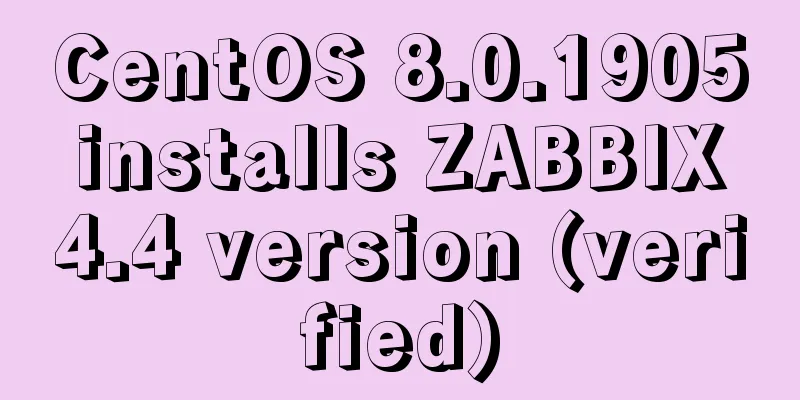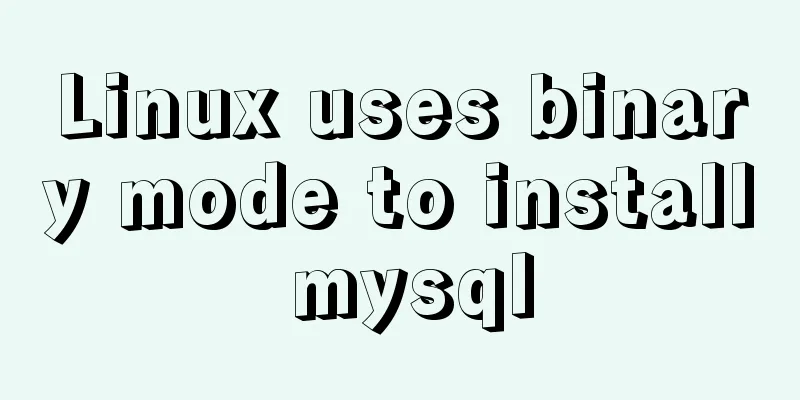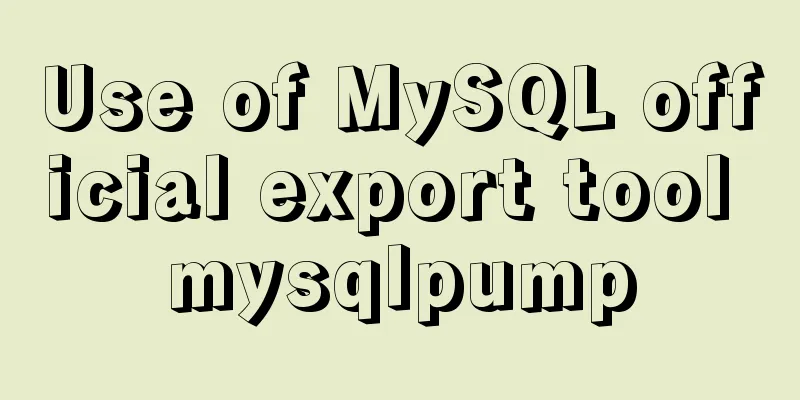How to set up a deployment project under Linux system

|
1. Modify the firewall settings and open the corresponding ports To modify the Linux system firewall configuration, you need to modify the /etc/sysconfig/iptables file. If you want to open a port, add a line in it. -A RH-Firewall-1-INPUT -m state --state NEW -m tcp -p tcp --dport 8080 -j ACCEPT, where 8080 is the port number to be opened, and then restart the Linux firewall service 2. Install JDK 1. Check the jdk version in the system [root@localhost software]# java -version 2. Detect the jdk installation package [root@localhost software]# rpm -qa | grep java show:
3. Uninstall openjdk [root@localhost software]# rpm -e --nodeps tzdata-java-2016g-2.el7.noarch [root@localhost software]# rpm -e --nodeps java-1.7.0-openjdk-1.7.0.111-2.6.7.8.el7.x86_64 [root@localhost software]# rpm -e --nodeps java-1.7.0-openjdk-headless-1.7.0.111-2.6.7.8.el7.x86_64 [root@localhost software]# rpm -e --nodeps java-1.8.0-openjdk-1.8.0.102-4.b14.el7.x86_64 [root@localhost software]# rpm -e --nodeps java-1.8.0-openjdk-headless-1.8.0.102-4.b14.el7.x86_64 Or use [root@localhost jvm]# yum remove *openjdk* Then enter [root@localhost software]# rpm -qa | grep java python-javapackages-3.4.1-11.el7.noarch javapackages-tools-3.4.1-11.el7.noarch 4. Install a new JDK First, go to the JDK official website to download the JDK version you want. After the download is complete, put the JDK installation package to be installed in the folder specified by the Linux system, and enter the folder with the command Unzip the jdk-8u131-linux-x64.tar.gz installation package [root@localhost software]# mkdir -p /usr/lib/jvm [root@localhost software]# tar -zxvf jdk-8u131-linux-x64.tar.gz -C /usr/lib/jvm 5. Set environment variables [root@localhost software]# vim /etc/profile Add at the very beginning:
export JAVA_HOME=/usr/lib/jvm/jdk1.8.0_131
export JRE_HOME=${JAVA_HOME}/jre
export CLASSPATH=.:${JAVA_HOME}/lib:${JRE_HOME}/lib
export PATH=${JAVA_HOME}/bin:$PATH6. Execute the profile file [root@localhost software]# source /etc/profile This allows the configuration to take effect immediately without restarting. 7. Check the newly installed JDK 3. Install tomcat 4. Install MySQL 1. If it has been installed before, uninstall it first 2. Enter the yum list | grep mysql command to view the downloadable version of the MySQL database provided by yum 3.yum install -y mysql-server mysql mysql-devel Yum will help us select the software needed to install the MySQL database and some other attached software 4. Start mysql, service mysqld start Log in to mysql and set the password as follows:
mysql> use mysql;
mysql> update user set password=password('123') where user='root' and host='localhost';
mysql> flush privileges;5. Set mysql to allow remote connection GRANT ALL PRIVILEGES ON *.* TO root@'%' IDENTIFIED BY 'password' WITH GRANT OPTION; 6. Open ports 7. Start the mysql service, mysql -u username -p password 5. Package the project into tomcat, configure other required environments, and start tomcat Summarize The above is the setting method of deploying projects under Linux system introduced by the editor. I hope it will be helpful to everyone. If you have any questions, please leave me a message and the editor will reply to you in time. I would also like to thank everyone for their support of the 123WORDPRESS.COM website! You may also be interested in:
|
<<: Detailed explanation of MySQL limit usage and performance analysis of paging query statements
>>: Sample code for implementing music player with native JS
Recommend
Vue ElementUI Form form validation
Form validation is one of the most commonly used ...
Summary of MySQL composite indexes
Table of contents 1. Background 2. Understanding ...
Detailed analysis of matching rules when Nginx processes requests
When nginx receives a request, it will first matc...
Why is UTF-8 not recommended in MySQL?
I recently encountered a bug where I was trying t...
How to use fdisk to partition disk in Linux
Commonly used commands for Linux partitions: fdis...
HTML meta explained
Introduction The meta tag is an auxiliary tag in ...
Docker image management common operation code examples
Mirroring is also one of the core components of D...
JavaScript canvas to achieve mirror image effect
This article shares the specific code for JavaScr...
Example of how to configure the MySQL database timeout setting
Table of contents Preface 1. JDBC timeout setting...
A brief analysis of the count tracking of a request in nginx
First, let me explain the application method. The...
jQuery realizes the scrolling effect of table row data
This article example shares the specific code of ...
Why do select @@session.tx_read_only appear in DB in large quantities?
Find the problem When retrieving the top SQL stat...
Explanation of monitoring parameters in performance and sys schema in MySQL 5.7 (recommended)
1. Performance schema: Introduction In MySQL 5.7,...
How to create a child process in nodejs
Table of contents Introduction Child Process Crea...
MySQL joint table query basic operation left-join common pitfalls
Overview For small and medium-sized projects, joi...









